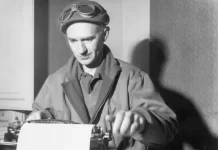This is the last of a series of stories about the bravery and heroic actions of the crew of the USS Cochise … a Yard Tug that possibly saved hundreds in the Bayshore area of the Jersey Shore…
Read the previous stories:
In the wake of the fire aboard the tanker Sunoco and the aversion of a tragedy that could well have blown up a good part of the Bayshore were it not for the quick thinking and bravery of military personnel, the US Navy conducted its own review of the entire incident with an eye towards lessons learned.
There were four major lessons NAD Earle and its officers readily believed they could take from that Jan. 1, 1945 incident in Sandy Hook Bay where a sudden fire midships left a tanker derelict and heading for Earle Naval Ammunition Depot where there were four ships loaded with 16650 tons on ammunition.
In typical Navy style, commendations were recommended for heroic sailors, sympathy expressed for lost lives and medical assistance given for survivors … Then the hard work of ensuring it wouldn’t happen again got underway.
In his report and recommendations Dockmaster Commander John A O’Pray pointed out that there had never been any supplies of Foamite on the piers. It is only on the fire trucks, he reported to his superiors. His immediate suggestion, therefore, was that “the piers be supplied with Foamite for prompt emergency use.”
Nor is there any availability for voice radio communications between the Dockmaster’s office, the piers, and the yard tugs at Leonardo, he wrote.
But it appears he lost no time in getting this corrected even before even writing his report. “It is suggested,” the Commander wrote, “that the delivery of such communication equipment which have been ordered, be expedited in order that communications may be maintained between the piers and the tugs at all times for obvious security reasons.”
The third lesson learned was also already underway, the report continued. “It is the plan of the Dockmaster to have the Docking Pilots assigned to the pier area available al all times for the purpose of moving any vessel necessary during emergencies.” He put that plan in place immediately since, he wrote, “the fact that the pilots dispatched here from New York for this emergency did not arrive for approximately three hours shows that dependence upon outside pilots may, at some future time, prove disastrous.”
Commander O’Pray’s fourth and most important recommendation and lesson learned from the fire in waters close to Earle Naval Ammunition Depot seemed almost too obvious to him to report. Yet he did.
“It is also obvious that there is a great danger in having too many ships at the piers at one time and the difficulty in getting them away without adequate crews is too great a responsibility for this activity. It is therefore apparent that all ships should arrange with this activity, their liberty program in order that a necessary number of men be aboard at all times to handle the ships. “
Then he concluded as his final recommendation even during wartime, “This also bears out the idea that all ships should arrange to leave as soon as loaded instead of laying over.”
A serious accident had been averted for the Bayshore by swift action and swifter thinking. The Navy recorded it and routinely continued its mission of participating in a war in foreign seas while providing safety and security at home along the New Jersey coastline.
Editor’s Note: Capt. O’Pray went on to become a Captain in the Navy and lived another 22 years after the Sandy Hook fire. He is buried in Arlington National Cemetery, Virginia.
Whether BM1 R.L. Tooker every received a medal, or whether Seaman Second class Bruno Patruno was further recognized for his bravery are not yet known. VeniVidiScripto is awaiting a response from the Naval Archives in Maryland to report on that action but invites anyone who may know whether these sailors were honored, or whether they continued in their naval careers, to inform VeniVidiScripto so they can be recognized here, and perhaps also by local Navy, township, county or veterans organizations.


